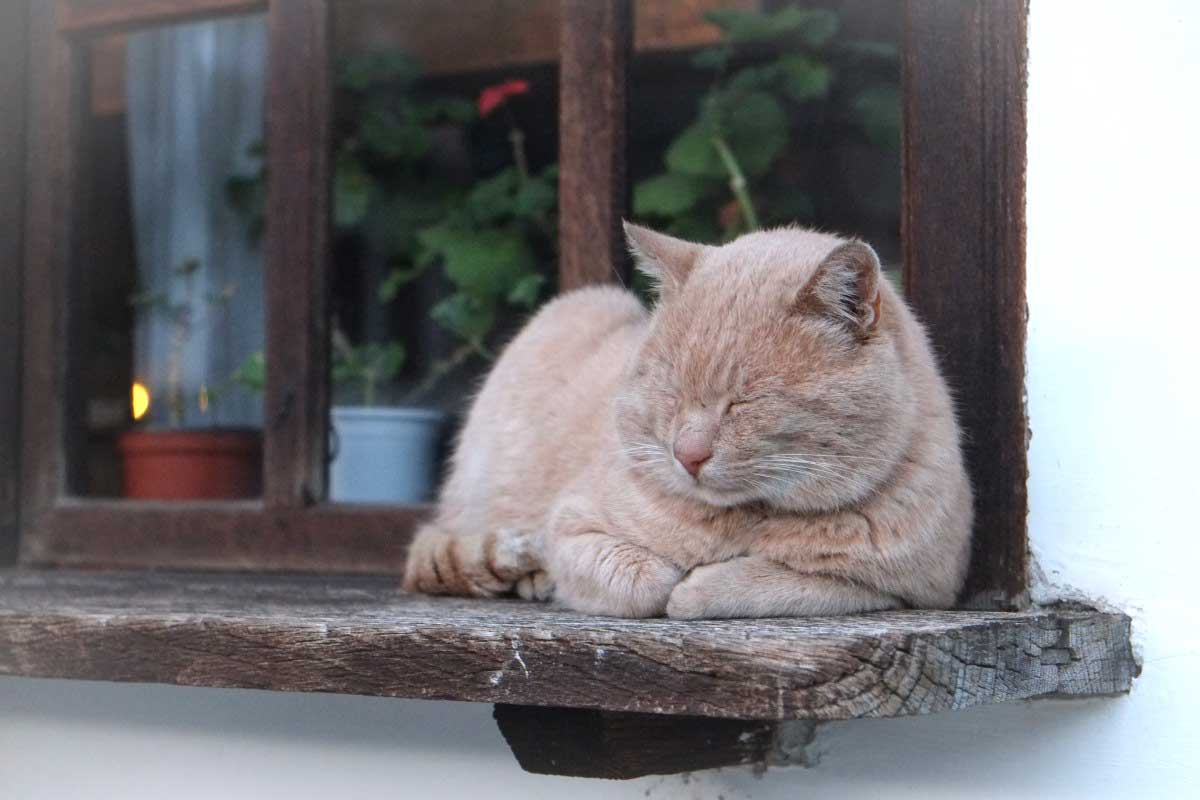Petting a shy cat needs some tricks. Have you ever encountered a feline enigma? A cat whose eyes sparkle with curiosity, yet whose every twitch seems to whisper, “Keep your distance”? Shy cats, with their guarded hearts and cautious demeanor, can leave even the most ardent cat lover feeling a bit lost. But fear not, fellow feline fancier! This guide is your key to unlocking the purrs and forging a loving bond with your shy companion, all through the gentle art of respectful petting.
Remember Luna, the sleek black cat who stole my heart at the shelter? Her emerald eyes held a universe of longing, yet every attempt to approach sent her scurrying under the nearest bed. Yet, with patience and understanding, I discovered the magic touch. It wasn’t about forceful strokes or demanding cuddles; it was about deciphering her unique language, respecting her boundaries, and offering affection on her terms. And let me tell you, the first purr that rumbled from her tiny chest was a symphony sweeter than any orchestra!
But taming a shy cat isn’t just about purrs; it’s about building trust, fostering a sense of security, and creating a bond that transcends fear. This guide will equip you with the tools to navigate your furry friend’s emotional landscape, speak their silent language, and transform hesitant tail flicks into contented kneads. We’ll delve into the world of feline body language, uncover the reasons behind their shyness, and most importantly, show you how to create a petting experience that’s positive, respectful, and oh-so-rewarding for both of you.
So, put away the catnip toys and fluffy feather wands for now. Let’s embark on a journey of gentle understanding, where patience becomes your superpower and a soft touch unlocks the door to a world of purring contentment. Remember, a shy cat’s love might take a little longer to bloom, but the fragrance is all the sweeter when it finally does.
Beyond the Stereotypes: Unmasking the Shy Cat
Shy cats often get labeled as “mean” or “unfriendly,” but these are just human interpretations of their cautious nature. It’s important to remember that every cat is an individual, with their own unique personality and communication style. Just like humans, some cats are naturally outgoing and social, while others prefer a more reserved approach. Shyness doesn’t equate to a lack of affection; it simply means their love comes with a side of caution.
So, where does this shyness come from? Sometimes, it’s rooted in past experiences, like negative interactions with humans or loud environments. Certain breeds, like Siamese and Persians, are also known for being more sensitive and reserved. Ultimately, a cat’s temperament is a complex blend of genetics, individual experiences, and socialization during their early development.
Understanding these factors allows us to approach shy cats with compassion and empathy. Instead of forcing affection, we can learn to read their subtle cues and create a safe, predictable environment where they feel comfortable expressing themselves.
The Feline Telegraph: Deciphering the Language of Shy Cats
Shy cats might not be vocal, but they sure know how to communicate! Their body language is a fascinating tapestry woven from posture, facial expressions, and tail movements. Learning to read these subtle signs is crucial for navigating the emotional landscape of your shy friend.
- Eyes: Wide, dilated pupils often indicate curiosity or excitement, while narrowed eyes might signal discomfort or fear. Slow blinks, however, are a sign of trust and contentment – a feline wink worth cherishing!
- Ears: Flattened ears pressed against the head scream “back off,” while perked ears demonstrate attentiveness and interest. A slight twitch might indicate curiosity or even a playful mood.
- Tail: A twitching tail can be a sign of nervousness, while a swishing tail is a clear “no thank you.” A tail held high and puffed up indicates fear or aggression, but a relaxed, swaying tail is a welcome invitation for interaction.
- Vocalizations: Hissing, growling, and spitting are obvious warnings to stay away. But don’t overlook the softer meows and trills, which can express contentment or even a request for attention.
Remember, these are just general guidelines. Each cat has their unique way of communicating, so pay close attention to their specific signals and adjust your approach accordingly. By observing and understanding their body language, you can build trust, create a safe space, and eventually unlock the purrs that lie hidden within your shy feline companion.
Mastering the Art of Gentle Touch
Ah, the allure of a shy cat! Their enigmatic presence, those soft, hesitant glances, and the quiet purr they share only with the chosen few can stir a deep yearning to connect. But navigating the delicate dance of petting a shy cat requires patience, understanding, and a touch as gentle as a butterfly’s wing. Fear not, fellow feline enthusiasts, for this guide will equip you with the skills to unlock the secrets of their hidden affection.
Respectful Initiation: Let Them Be the Guide
Remember, the key to a shy cat’s heart lies in respecting their boundaries. Forget forceful scoops or intrusive pats; instead, become an observer, a gentle presence waiting to be invited in. Sit quietly on the floor, perhaps offering a tempting toy or a sprinkle of catnip. If your feline friend approaches, allow them to sniff your hand, their whiskers twitching with curiosity. This initial contact is their way of saying, “Hello, I’m cautiously interested.” Consider it an honor, a small step of trust on their journey towards connection.
Start Slow and Small: A Symphony of Gentle Strokes
Once your furry friend deems you worthy of a closer encounter, the art of gentle touch comes into play. Begin with slow, deliberate strokes on areas they typically enjoy, like the soft fur under their chin, the velvety space behind their ears, or the base of their tail, where tickles turn into purrs. Keep your strokes light and feathery, like a gentle breeze caressing their fur. Remember, less is often more; short, infrequent petting sessions are preferable to overwhelming them with a shower of affection.
Respectful Retreat: Recognizing the Signs of Discomfort
Shy cats are masters of nonverbal communication. Watch their body language like a hawk. A flattened tail, dilated pupils, or a twitching ear are all signs they’re feeling overwhelmed. Don’t misinterpret these signals as rudeness; they simply mean “Enough for now, please.” Respect their retreat gracefully. Stepping back and offering them space shows you understand their needs and won’t force interaction. This builds trust and encourages them to approach you again on their terms.
Positive Reinforcement: Sweetening the Deal with Treats and Purrs
Pair your gentle petting sessions with positive experiences to create a delightful association. Offer a tasty treat after a brief petting session, engage in a playful game that ends with a few strokes of affection, or whisper soothing words of praise as you pet them. This positive reinforcement helps them connect petting with happy feelings, making them more receptive to future interactions.
Remember, patience is key. Building trust with a shy cat takes time and understanding. But with these gentle techniques and a respect for their boundaries, you’ll soon discover a world of purrs, head bumps, and quiet moments of love, proving that even the most reserved feline heart can be won over with a touch of kindness and respect.
Tailoring Your Touch: Understanding Your Cat’s Petting Preferences
Every cat, like a snowflake, is unique in their desires and dislikes, especially when it comes to the delightful dance of petting. Understanding your feline friend’s individual preferences is key to unlocking a world of purrs and happy meows. Let’s delve into the fascinating world of cat-approved petting, exploring the nuances that make each touch a personalized experience.
Breed-Specific Nuzzles
Just as different breeds of dogs have distinct personalities, so too do cats! Some breeds, like the cuddly Ragdoll or the laid-back Maine Coon, are renowned for their love of attention, happily accepting belly rubs and head boops. Others, like the independent Siamese or the playful Bengal, might prefer shorter petting sessions or specific areas like ear scratches or chin tickles. Recognizing your cat’s breed can offer valuable clues about their preferred petting style.
Age is Just a Number (for Affection)
Kittens, with their boundless energy and playful spirit, might enjoy short bursts of petting on their backs or behind their ears during active playtime. Adult cats often settle into more relaxed preferences, appreciating gentle strokes down their sides or chin rubs on their terms. Senior cats, with their wisdom and slower pace, might favor gentle head pats or massages near their favorite resting spots. Remember, age is just a number when it comes to affection; cater your approach to your cat’s energy level and comfort.
Trauma and Trust: A Delicate Dance
For cats who have experienced abuse or neglect, the idea of a gentle touch can be daunting. Building trust takes time, patience, and sensitivity. Start by offering slow blinks, soft words, and treats from afar. Gradually, allow them to approach you at their own pace, offering gentle chin scratches or ear rubs without forcing interaction. Remember, every step forward, no matter how small, is a victory in building a trusting bond.

Creating a Petting Paradise: Where Purrs Flow Freely
Now that you understand your cat’s preferences, let’s create an environment that invites joyful purrs and happy head-butts.
Calm and Quiet: A Purrfect Sanctuary
Loud noises and sudden movements can be unsettling for even the most confident cat. Opt for a quiet corner with gentle music or nature sounds playing softly. Avoid looming over them or making sudden grabs, as this can trigger their flight instinct.
Offer Choices: Let Them Be the Master of Petting
Cats are all about control, and petting should be no different. Don’t force interaction; instead, provide multiple “petting stations” around the house – a comfy blanket on a sunny windowsill, a cozy cat tree, or even your lap if they choose to grace it with their presence. Let them come to you when they’re feeling receptive.
Interactive Play: Building Trust Through Fun
Before diving straight into petting, engage in some playful interaction! A quick feather wand session, a laser pointer chase, or a stimulating puzzle toy can help expend your cat’s energy and make them more receptive to touch. Play also builds trust and strengthens your bond, making the petting experience even more enjoyable.
Scentual Strategies: A Calming Aroma for Happy Touches
Certain scents can have a calming effect on cats, making them more open to petting. Consider using a calming pheromone diffuser in the room, or offer catnip-filled toys before a petting session. Remember, a relaxed cat is a happy cat, and a happy cat is a cat more likely to enjoy your gentle touch. How AI, ChatGPT maximizes earnings of many people in minutes
By understanding your cat’s unique personality, tailoring your approach, and creating a welcoming environment, you can transform petting into a cherished ritual of love, trust, and purring bliss. Remember, patience, respect, and a whole lot of love are the key ingredients to unlocking the true magic of petting your feline friend.
Beyond the Belly Rub: Embracing Other Ways to Love Your Shy Cat
While the allure of a purring kitty nestled comfortably in your lap is undeniable, for some felines, physical touch isn’t their preferred love language. Shy cats, bless their timid hearts, might shy away from outstretched hands and eager pats. But fear not, fellow cat enthusiasts! There are a multitude of ways to shower your cautious companion with affection, build trust, and strengthen your bond without forcing unwanted cuddles.
Respectful Interactions: Whispers of Love in Your Body Language
Instead of reaching in for a full-blown pet, try offering gentle head bumps or chin scritches. These subtle gestures, delivered slowly and with an open hand, signal respect and avoid startling your feline friend. Slow blinks, often referred to as “kitty kisses,” are another powerful tool. Mimicking their relaxed, trusting expression communicates comfort and understanding. Simply sitting quietly in their presence, without expectation, allows them to approach you on their terms, fostering a sense of security and building trust brick by loving brick. Motivation – Mind – Success – Thinking – Productivity – Happiness
Grooming Rituals: A Bonding Dance of Care
For some cats, gentle brushing can be a delightful bonding experience. Remember, cats groom each other to strengthen social bonds, so mimicking this behavior can deepen your connection. Use a soft brush and start with short, gentle strokes, focusing on areas they enjoy like under the chin or behind the ears. Watch their body language closely – any signs of discomfort mean it’s time to stop. If brushing seems overwhelming, consider a grooming glove that lets you stroke them without directly touching their body. Business – Money Making – Marketing – E-commerce
Quality Time: The Gift of Your Presence
Sometimes, the most meaningful gesture is simply being present. Dedicate time each day to simply sitting near your cat, offering a quiet haven of companionship. Read aloud in a soothing voice, watch TV together (they might surprise you with their interest!), or engage in silent meditation, your calm energy radiating around them. This allows them to initiate interaction at their own pace, gradually associating your presence with positive experiences and building trust. Remember, patience is purrfect!
Patience is Purrfect: Navigating the Bumpy Road to Trust
The journey to earning your shy cat’s trust might not be linear. There might be days when they seem more receptive, followed by periods of retreat. This is perfectly normal! Identifying triggers that make your cat anxious, be it loud noises, sudden movements, or unfamiliar guests, can help you create a calm and predictable environment. Remember, setbacks are a natural part of the process. Don’t get discouraged; instead, approach each interaction with understanding and unwavering patience. Fitness – Meditation – Diet – Weight Loss – Healthy Living – Yoga
If your cat’s shyness seems severe or accompanied by other anxieties, consulting a veterinarian or animal behaviorist can be immensely helpful. They can provide tailored advice and strategies to address underlying issues and guide you on your journey to a deeper, more fulfilling connection with your beloved feline companion.
Remember, love comes in many forms, and for your shy cat, it might not always involve belly rubs. By respecting their boundaries, offering alternative forms of affection, and showering them with patience, you can unlock a world of trust and affection, creating a bond as unique and beautiful as your feline friends themselves.
The Rewarding Journey: Celebrating Success with Your Shy Cat
Unraveling the heart of a shy cat is a delicate dance, a journey paved with patience, understanding, and unwavering love. But as you navigate this heartwarming path, don’t forget to celebrate the milestones, big and small, along the way. Each hesitant step forward, each playful swat at a feather toy, each purr elicited by a gentle stroke – these are precious victories worth acknowledging and cherishing. RPM 3.0 – 60% CONVERSION & Money for Affiliate Marketing
Celebrating Milestones: Big and Small Triumphs Deserve Applause
Remember, for a shy cat, even the smallest interaction can be a monumental leap. So, don’t underestimate the significance of those tentative head nudges, the fleeting moments of purring contentment, or the quiet acceptance of your presence. Each of these moments represents a step towards greater trust, a blossoming of their delicate inner world. As you witness these milestones, shower your feline friend with affectionate praise and delectable treats. A verbal “good kitty” coupled with a gentle head scratch, or a favorite toy offered with a warm smile, can work wonders in reinforcing positive behavior and strengthening your bond. Health books, guides, exercises, habits, Diets, and more
Unique Bonds: Embracing the Individuality of Your Shy Cat
Just like snowflakes, no two shy cats are exactly alike. Some may take longer to warm up, their trust built brick by gentle brick. Others might surprise you with sudden bursts of affection, followed by retreats back into their cozy hideaways. Remember, patience is key. Embrace the unique personality of your shy companion, appreciating their quirks and preferences. What might send one cat sprinting under the bed might be met with playful curiosity by another. Discovering their unique language of love, their preferred petting spots, and their favorite ways to interact will be a journey of shared discovery, deepening your understanding and appreciation for your feline friend. Cat accessories on Amazon
A Lifetime of Love: The Long-Term Rewards of Patience
While the initial stages of building trust with a shy cat might require an extra dose of patience, the long-term rewards are truly priceless. Imagine the joy of waking up to a gentle head nudge or a rumbling purr as you settle into your favorite chair. Picture the playful swats at dangling toys, the tentative explorations of your lap, and the moments of pure, unadulterated love that blossom with time and respect. The journey with your shy cat might be slow and steady, but the destination is a haven of mutual understanding, companionship, and a love that transcends words. So, hold onto your patience, celebrate the small victories, and savor the unique bond you’re building with your special feline friend. Remember, the love you nurture today will blossom into a lifetime of shared happiness and purrfect memories.
Other Interesting Articles
- How to Stop A Cat from Spraying after Neutering: 11 Tips
- How to Tell if A Cat is in Pain from Arthritis: How to Help
- 14 Reasons Why Is My Cat Making Weird Purring Noises
- How to Take Care of A Kitten without A Mother: 21 Tips
- What Is Caterwauling? 10 Most Common Reasons Cats Do It
- How to Introduce A Cat To A New Home When Moving?
- Cat Declawing: Tips, FAQs, Health, Alternatives, Pros, Cons
- New Cat? 20 Common Warning Signs When Introducing Cats
- 23 Sure Signs Your Cat May Be in Pain and How to Help It
- How to Stop A Neutered Cat From Spraying: 15 Simple Tips
- 12 Signs Your Cat May Require a Feline Companion
- Feline Pheromones: 12 Ways Calming Cat Pheromones Work
- Do Cats Feel Lonely without Other Cats? 6 Signs of Loneliness
- 10 Reasons Why Cats Hiss: How To Stop The Behavior
- Cat Feeding: Tips, Guide, FAQs, Chart for Kittens to Veterans
- Cat Vaccinations: Schedule, FAQs, Side Effects, and Costs
- 44 Strange, Weird, and Random Cat Behaviors Explained
- 21 Pro Tips for Fostering Kittens: Essential Care Guide
- 18 Cat Sounds Your Feline Makes: What They Mean
- Sexing Kittens: How to Tell, Determine the Sex of Your Kitten



